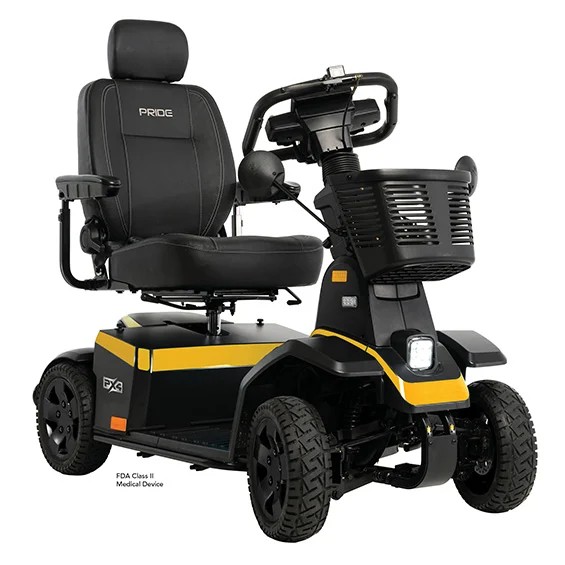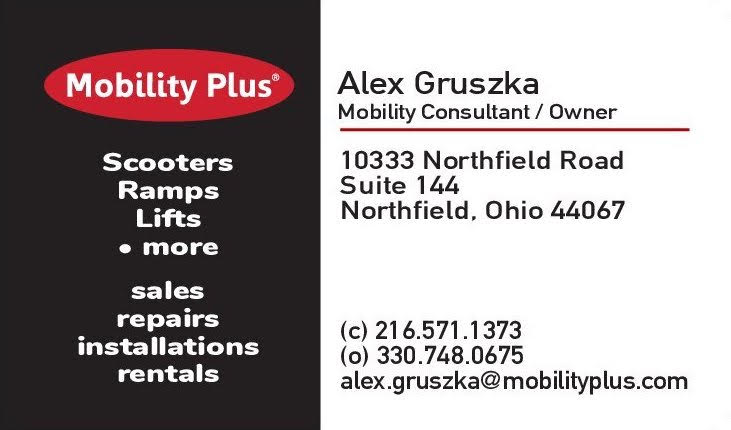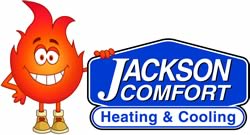Choosing the right mobility scooter represents a significant decision that can dramatically improve your independence and quality of life. With numerous models, features, and specifications available, making an informed choice requires understanding what to look for and how different factors impact daily use. At Mobility Plus Northfield, we’ve helped countless customers navigate this important decision, and we’re here to guide you through everything you need to know about selecting and caring for a mobility scooter.
Understanding Your Mobility Needs
Before exploring specific scooter features, it’s essential to honestly assess your mobility requirements and lifestyle. The right scooter should match your physical capabilities, intended use patterns, and environment where you’ll primarily operate the device.
Consider your current mobility level and how much assistance you need. If you can walk short distances but tire easily, a lightweight travel scooter might be perfect. If walking is difficult or painful, a more robust scooter with greater support and comfort features would be more appropriate. Your balance and coordination also influence scooter selection, as some models require better balance than others.
Think about where you’ll use your scooter most frequently. Indoor use requires different features than outdoor operation. If you’ll primarily use the scooter indoors, maneuverability and compact size matter more than rugged construction. For outdoor use, you’ll want larger wheels, better ground clearance, and weather-resistant components.
Transportation needs significantly impact scooter choice. If you need to transport your scooter in a car, lightweight models that disassemble easily are essential. If transportation isn’t a concern, you can focus on comfort and features rather than portability.
Your living environment also matters. Multi-level homes may require considering how you’ll manage stairs, while single-level homes provide more flexibility. Doorway widths, turning spaces, and storage areas all influence which scooter will work best in your specific environment.
Three-Wheel vs. Four-Wheel Scooters
The number of wheels represents the most fundamental scooter design decision, with each configuration offering distinct advantages. Understanding these differences helps ensure you select the design that best matches your needs and preferences.
Three-wheel scooters provide superior maneuverability, making them excellent for indoor use and tight spaces. The tighter turning radius allows navigation through narrow aisles, doorways, and around furniture with greater ease. Three-wheel models are typically lighter and more portable, making them popular choices for people who need to transport their scooters frequently.
However, three-wheel designs sacrifice some stability compared to four-wheel models. Users need better balance and coordination to operate three-wheel scooters safely, particularly on uneven surfaces or inclines. The reduced stability can be a concern for individuals with balance issues or those who feel less confident on mobility devices.
Four-wheel scooters offer enhanced stability and can handle more challenging terrain. The additional wheel provides better weight distribution and reduces the risk of tipping, making these models safer for outdoor use and uneven surfaces. Four-wheel scooters typically support higher weight capacities and offer more comfortable seating options.
The trade-off for increased stability is reduced maneuverability. Four-wheel scooters require larger turning spaces and may struggle in very tight indoor environments. They’re also typically heavier and less portable than three-wheel alternatives.
Weight Capacity and Size Considerations
Selecting a scooter with appropriate weight capacity is crucial for both safety and performance. Manufacturers specify maximum weight limits, but choosing a scooter rated well above your current weight ensures optimal performance and longevity.
Weight capacity affects more than just safety. Scooters operating near their maximum capacity experience reduced battery life, slower speeds, and increased wear on components. Selecting a model rated 50-100 pounds above your weight provides better performance and reliability over time.
Consider not just your body weight but also the weight of items you’ll carry. Purses, shopping bags, medical equipment, and other personal items add to the total load. A scooter that seems adequately rated for your body weight might be overloaded when factoring in carried items.
Seat size and adjustability significantly impact comfort during extended use. Seats that are too narrow or too wide can cause discomfort and potentially affect your ability to reach controls properly. Most quality scooters offer adjustable seat height and some provide adjustable seat width to accommodate different body types.
Ground clearance determines what terrain your scooter can navigate safely. Higher ground clearance allows travel over curbs, gravel, and uneven surfaces, while lower clearance provides easier mounting and dismounting but limits terrain options.
Battery Life and Charging Systems
Battery performance represents one of the most critical aspects of mobility scooter ownership, directly affecting your independence and confidence. Understanding battery specifications and proper charging practices ensures reliable operation and maximum battery lifespan.
Battery range varies significantly between scooter models and depends on multiple factors including user weight, terrain, speed, and battery condition. Manufacturers typically provide range estimates under ideal conditions, but real-world performance often differs. Quality scooters generally provide 4-8 hours of operation or 7-15 miles of travel on a full charge.
Factors affecting battery performance include user weight, with heavier loads reducing range and speed. Terrain plays a major role, as hills, gravel, and uneven surfaces drain batteries faster than smooth, level surfaces. Operating speed also impacts range, with higher speeds consuming more power than moderate speeds.
Weather conditions affect battery performance, particularly temperature extremes. Cold weather can reduce battery capacity by 20-30%, while excessive heat can damage batteries over time. Understanding these factors helps you plan trips and avoid situations where you might run out of power away from home.
Charging practices significantly impact battery lifespan and reliability. Quality mobility scooters use sealed lead-acid or lithium batteries, each with specific charging requirements. Most scooters include automatic chargers that prevent overcharging, making daily charging both safe and beneficial.
Proper charging involves plugging the charger into the scooter first, then connecting to wall power. This sequence prevents electrical spikes that could damage sensitive components. Always use the charger provided with your scooter, as different models have different charging requirements.
Charge your scooter after each use, even for short trips. Modern scooter batteries don’t suffer from memory effects, so frequent charging actually extends battery life. Overnight charging is typical, with most batteries requiring 8-10 hours for a complete charge from fully depleted state.
Never allow batteries to remain discharged for extended periods. Discharged batteries can suffer permanent damage within weeks, requiring expensive replacement. If you won’t use your scooter for extended periods, charge the batteries fully and recharge monthly to maintain battery health.
Comfort Features and Ergonomics
Comfort features can make the difference between a scooter you enjoy using and one that sits unused in storage. Since many users spend considerable time on their scooters, comfort directly impacts quality of life and willingness to remain active.
Seating represents the most important comfort consideration. Quality scooter seats provide adequate support for your back, proper cushioning for extended sitting, and adjustability to accommodate your specific body dimensions. Look for seats with sufficient width, appropriate depth, and back support that matches your posture needs.
Armrests should be positioned at comfortable heights and provide adequate support without restricting movement. Adjustable armrests accommodate different arm lengths and preferred positioning. Some scooters offer removable armrests to ease transfers, while others provide flip-up designs for side access.
Suspension systems significantly impact ride comfort, particularly for outdoor use. Front and rear suspension absorb bumps and vibrations, reducing fatigue and improving comfort on uneven surfaces. While suspension adds cost and complexity, it provides substantial comfort benefits for frequent users.
Control placement and design affect both comfort and safety. Controls should be easily reachable without straining, clearly marked for easy identification, and responsive without being overly sensitive. Tiller angle adjustment allows positioning controls at comfortable angles for different users.
Storage options add convenience and practicality to scooter use. Front baskets provide easy access to personal items, while under-seat storage offers secure space for valuable items. Consider your typical storage needs when evaluating different scooter models.
Safety Features and Considerations
Modern mobility scooters include numerous safety features designed to protect users and prevent accidents. Understanding these features helps you select a scooter that provides appropriate safety levels for your specific situation and operating environment.
Braking systems vary between scooter models, with electronic regenerative braking being most common. This system automatically engages when you release the throttle and provides smooth, predictable stopping. Some scooters include additional hand-operated brakes for emergency situations or parking on inclines.
Lighting systems improve visibility and safety, particularly for outdoor use or low-light conditions. LED headlights and taillights help others see you, while turn signals communicate your intentions. Some scooters include hazard lights for emergency situations.
Speed control systems allow adjustment of maximum operating speed, which can be valuable for new users or when operating in crowded areas. Many scooters offer multiple speed settings, allowing you to choose appropriate speeds for different environments.
Anti-tip wheels or systems help prevent the scooter from tipping backward on inclines or when accelerating. While not foolproof, these systems provide additional stability margins that can prevent accidents in challenging conditions.
Weight distribution affects scooter stability and safety. Quality scooters are designed with appropriate weight distribution that maintains stability under normal operating conditions. Avoid overloading storage areas or making modifications that could affect balance.
Maintenance and Longevity
Proper maintenance ensures your mobility scooter provides years of reliable service while maintaining safety and performance. Understanding basic maintenance requirements helps protect your investment and prevents costly problems.
Regular cleaning keeps your scooter looking good and functioning properly. Wipe down surfaces regularly with appropriate cleaners, paying attention to control areas and seating surfaces. Avoid using excessive water near electrical components, and ensure the scooter is completely dry before charging.
Tire maintenance involves regular pressure checks and visual inspections for wear or damage. Properly inflated tires provide better performance, longer battery life, and improved safety. Replace tires when tread becomes worn or if sidewall damage appears.
Battery maintenance represents the most critical ongoing care requirement. Keep battery terminals clean and tight, check fluid levels in serviceable batteries, and maintain proper charging practices. Replace batteries when performance becomes unsatisfactory rather than waiting for complete failure.
Professional service intervals vary by manufacturer and usage, but annual inspections by qualified technicians help identify potential problems before they become serious. Professional service typically includes comprehensive safety checks, electrical system testing, and mechanical adjustments.
Making Your Decision
Selecting the right mobility scooter requires balancing multiple factors including your physical needs, lifestyle requirements, budget considerations, and long-term expectations. Take time to test different models in person, as specifications alone don’t convey how a scooter will feel and perform for your specific situation.
At Mobility Plus Northfield, we encourage customers to spend time trying different scooters in our showroom. This hands-on experience reveals preferences and requirements that aren’t apparent until you actually operate the equipment. We can explain the differences between models and help you understand how various features would benefit your specific needs.
Consider not just your current needs but how they might change over time. While you shouldn’t over-buy features you’ll never use, selecting a scooter with some growth capacity can prevent the need for premature replacement as your needs evolve.
Quality and reliability should factor heavily into your decision. A well-built scooter from a reputable manufacturer will provide years of dependable service, while a bargain model might leave you stranded or require frequent repairs. Consider the total cost of ownership, including maintenance and potential repairs, rather than focusing solely on purchase price.
Your mobility scooter represents an investment in independence and quality of life. Taking time to make an informed choice ensures you select a scooter that enhances rather than complicates your daily activities. Visit Mobility Plus Northfield to experience the difference that proper selection makes in mobility solutions.
Mobility Plus Northfield offers a complete selection of mobility scooters from leading manufacturers. Visit our showroom at 10333 Northfield Road, Suite 144, Northfield, OH, or call (330) 748-0675 to test drive our scooter options and find the perfect match for your needs. Mobility Plus Northfield – Scooters Product Line
























